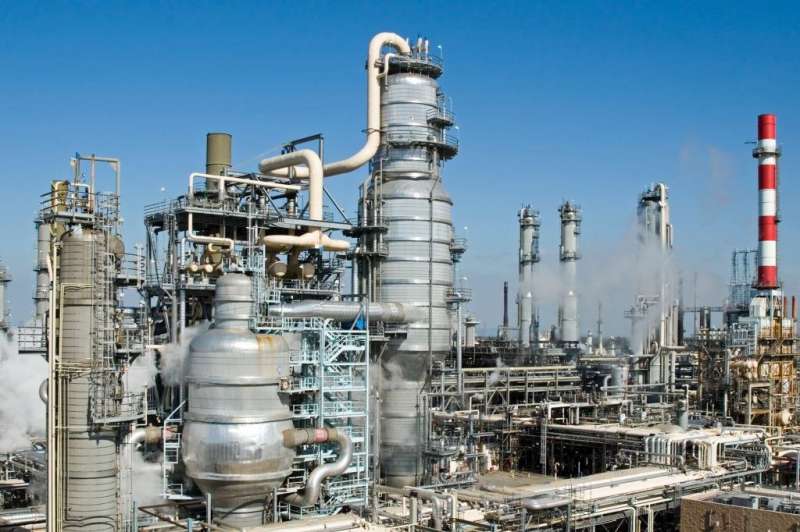Greenhouse gas emissions can be reduced with already existing technologies. Credit: Fotolia, Chad McDermott
The chemical sector has a big role to play in tackling climate change and achieving EU energy targets. The wide scale use of existing and—in particular—emerging innovative energy technologies can bring big emissions savings to the sector.
The Joint Research Centre (JRC), the European Commission's science and knowledge service, has published a pioneering study on the role of the chemical and petrochemical industry in reaching the EU climate targets. The innovative energy technologies considered in the study "Energy efficiency and GHG emissions: Prospective scenarios for the Chemical and Petrochemical Industry" can cut annual greenhouse gas (GHG) emissions by 72.5 Mt of CO2, equivalent to 36 percent of GHG emissions in 2050, while supporting the sector's growth. The conclusions are based on a model accounting for fuel prices, GHG allowances and the payback period of technologies such as combined heat and power and carbon capture and storage.
More production with fewer emissions
The report contributes to the growing pool of evidence that reducing GHG emissions can take place while sustaining and contributing to sectorial and economic growth. The study found that the best available and emerging innovative energy technologies can support a 45.6 percent increase of production in the sector. Also, the petrochemical and chemical industries can benefit by obtaining annual energy savings of 4 percent. Implementing such technologies can be the basis for increase of industrial production accounting for 20 percent of the EU GDP by 2020, from 15 percent currently. Thus, this benefits everyone – consumers, environment, and the two sectors.
The petrochemical and chemical industries are complex and diverse with lack of publicly available data on energy use, and varying production processes. Against this background the JRC has produced a first-of-a-kind study that identifies 26 key chemical products accounting for 75 percent of the industry's total energy use, and for the vast majority of its GHG emissions. Information was gathered at facility level to create a comprehensive database of products, energy use, emissions, costs and production pathways.
How to achieve the 2050 emissions reduction targets?
By 2050, the EU aims to reduce GHG emissions to 80-95 percent below 1990 levels, through investment in clean technologies and low-carbon energy.
The study concludes there is a need for additional research as identified in the Energy Union Package in order to reach the 2050 climate objectives in a cost-effective way. Since most of the potential savings identified in this study are made possible by innovative energy technologies not yet effectively implemented in the industry, urgent action needs to be taken to make these savings a reality.
Provided by CORDIS





















